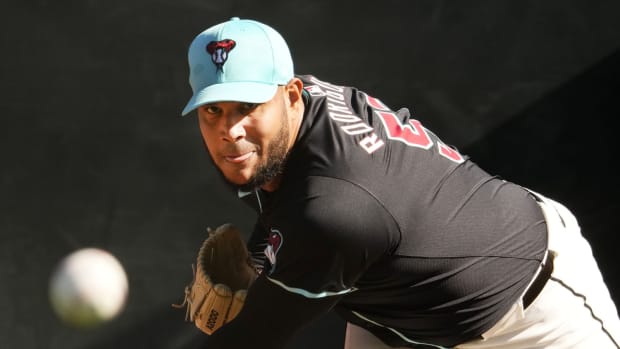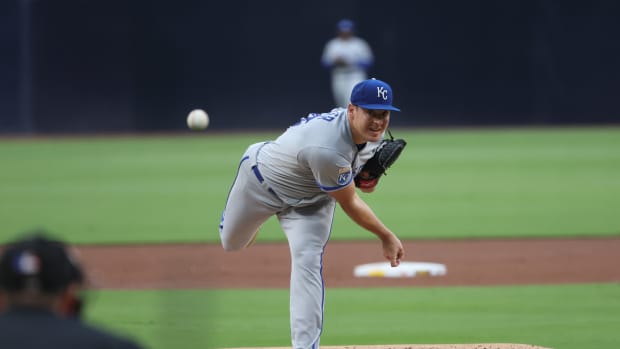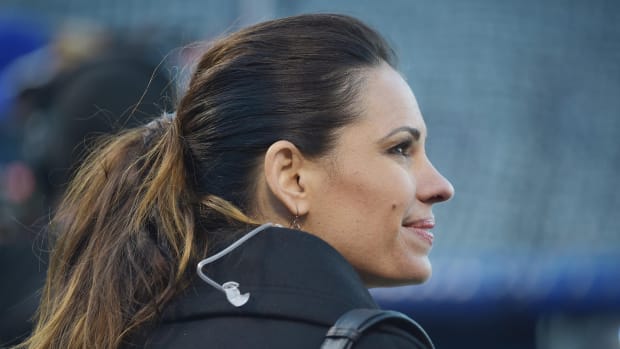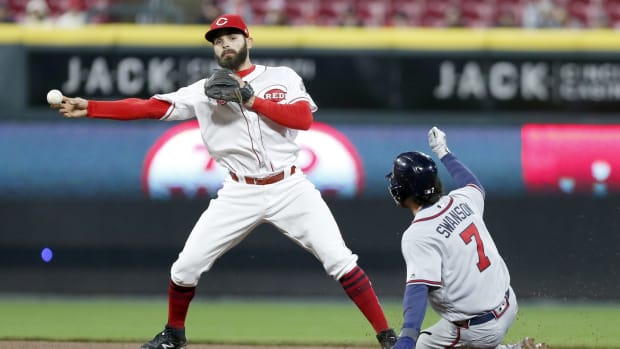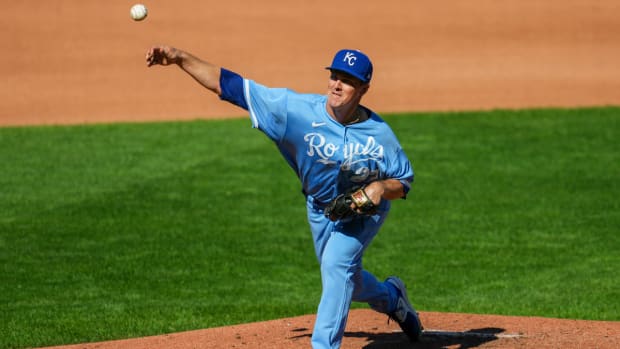Which Is Worse? Comparing the 2005 Royals and 2021 Orioles
The 2005 Kansas City Royals now have a new brother in futility as the Baltimore Orioles recently lost 19 consecutive games. Any Royals fan worth their salt will know that the mid-2000s Royals were an especially bad baseball team that really doesn't need any introduction or re-examination.
However, these current events do make you wonder which group truly was the worst of the worst and which team would emerge victorious in a seven-game series ... right?
So, with nothing but time to kill, let’s look at each team's roster during their respective 19-game skid and determine which group would emerge victorious in the championship series that nobody asked for.
Quick side notes: I’ve shaved these teams down to a 26-man roster so while not every player that played during this stretch might make it into this article, I assure you that this is the best 26-man roster for each team that could be assembled.
Disclaimer: All statistics collected were valid entering Thursday's play.
Catcher
Kansas City: John Buck
Baltimore: Pedro Severino
Let’s start with baseball's most thankless position: catcher.
This might be the most tightly contested battle of this matchup. Buck and Severino grade out to be equal offensively when it comes to catchers, with Severino (so far) getting on base a tick more than Buck did and with Buck supplying a bit more power and average.
However, Buck possessed an underrated arm. He threw out over a third of runners, and the same can't be said for Severino. He's throwing out just 25% of runners. It should also be noted that so far, Severino leads the league in passed balls and Buck only allowed three of them in 2005.
Advantage: Royals.
First Base
Kansas City: Matt Stairs
Baltimore: Ryan Mountcastle
On the surface, this may look like a complete mismatch as Mountcastle is one of the more promising prospects the Orioles have going for them right now and Matt Stairs was 37 in 2005. It does have to be noted, though, that Stairs had a higher WAR and OPS in 2005 than Mountcastle has right now.
However, a .015 bump in OPS does not make up for the fact that there is far more Mountcastle can do on a baseball field than Stairs could ever do. Mountcastle also grades out as a much better defender than Stairs, so the decision is clear — but maybe not as clear as originally assumed.
Advantage: Orioles.
Second Base
Kansas City: Ruben Gotay
Gotay Baltimore: Pat Valaika
Bad baseball teams often have a giant hole at second base, and that theory holds true for both of these teams which bring starters who are chock-full of versatility, but not much else. Both players are low average, low power, low on-base, defensive-centric second basemen.
However, Gotay had a much better season in 2005 than Valaika is having right now, so he gets the edge.
Advantage: Royals.
Third Base
Kansas City: Mark Tehan
Baltimore: Maikel Franco
Some astute readers might come across the fact that Maikel Franco has been DFA’d by Baltimore and is no longer a member of the team. However, he did play for them during their skid, which means he is eligible for this team.
Mark Tehan might go down as one of the most underappreciated players in Royals history, as he would go on to be a career .269 hitter with KC while averaging about 12 home runs and 60 RBIs a season. However, in 2005, Tehan was a rookie and was struggling to adapt to major league pitching. He hit .246 on the year with an OBP barely above .300.
That being said, rookie Mark Tehan is still a better player than modern-day Maikel Franco, whose only edge on Tehan is his power. That power is neutralized by the fact that Franco actually had a lower SLG% and OPS than Tehan had in 2005.
Advantage: Royals.
Shortstop
Kansas City: Angel Berroa
Baltimore: Ramon Urias
This matchup right here is maybe the most surprising result of this analysis in just how lopsided it is.
Berroa was once hailed as the savior of the Royals, taking home Rookie of the Year honors in 2003 over the likes of Hideki Matsui and Mark Teixeira. Sadly, for the Royals, 2003 was the best year of his career and he never really progressed past the prospect stage. By 2005, he was just another cog of frustration in the Royals machine, hitting for less average and power than he did the two years prior.
Ramon Urias, on the other hand, has gotten only a handful of looks for Baltimore this year over at short. With that said, it already appears that he is a much better player than his predecessor in Freddy Galvis and is a future piece of the Orioles' core going forward.
Advantage: Orioles.
Outfield
Kansas City: Emil Brown, David DeJesus, Terrence Long
Baltimore: Cedric Mullens, Anthony Santander, Austin Hays
Cedric Mullens is without a doubt the best player in either of these outfields, with an OPS close to .900 and a well-deserved All-Star game appearance this year. However, from there it becomes a bit of a quandary between modern-day baseball philosophy and old-school mentalities.
The Orioles' lineup has way more power, as they have hit 49 round-trippers so far this year compared to the Royals' 32 in 2005. With that being said, hitting home runs is about the only thing the Orioles outfield did better than the Royals as Kansas City’s outfield has a much higher AVG. and OBP. with also a slightly better SLG. as the splits below show.
Kansas City: .286/.344/.428
Baltimore: .247/.298/.425
However, if you take away Cedric Mullens from the Orioles and fill in his spot with the Orioles' next most-played outfielder in DJ Stewart, the slash numbers fall off a cliff for the O's (.220/.284/.396).
Mullens is the cloak that is hiding a rather pedestrian Orioles outfield, unlike the Royals who do indeed lack that one superstar but make up for it by having an incredible amount of balance.
Advantage: Royals.
Designated Hitter
Kansas City: Mike Sweeney
Baltimore: Trey Mancini
Before the analysis begins, it should go without saying that Trey Mancini’s story of defeating cancer is awesome and his performance in the Home Run Derby was nothing short of inspiring.
With that out of the way, Mike Sweeney is the better player — even at 32-years old. Surprisingly enough, Mancini is on pace for more home runs and RBIs than Sweeney had in 2005. The real difference between the two comes down to the numbers that are behind those round-trippers and RBIs.
Below are the slash lines and WAR values for both players.
Trey Mancini: .255/.319/.452, 0.9 WAR
Mike Sweeney: .300/.347/.517, 1.8 WAR
An argument could also be made that if Mike Sweeney was hitting in the hitter-friendly confines of Camden Yards instead of the sprawling spacious caverns of Kauffman Stadium for the majority of the season, his home run and RBI numbers would eclipse those of Mancini’s.
Advantage: Royals.
Bench
Kansas City: Alberto Castillo (C), Joe McEwing (UTL), Denny Hocking (IF), Chip Ambres (OF), Paul Phillips (C/1B)
Baltimore: Austin Wynns (C), Jorge Mateo (UTL), DJ Stewart (OF), Ryan McKenna (OF), Kelvin Gutierrez (INF)
It is a wash between these two benches because in a seven-game series, most (if not all) of the heavy lifting will be done by the starters. Neither of these teams possesses a real difference-maker off the bench.
Advantage: Neither.
Starting Rotation
Kansas City: Zack Greinke, DJ Carrasco, Jose Lima, Runelvys Hernandez, Mike Wood
29-63 record, 5.65 ERA, 351 K to 287 BB in 741 IP
Baltimore: John Means, Matt Harvey, Keegan Akin, Spenser Watkins, Jorge Lopez
16-47 record, 6.47 ERA, 377 K to 150 BB in 403.1 IP
This is about as rough as expected.
Pitching was not a strength of either of these two sides and while John Means is having a productive season with the Orioles so far, much like his teammate in Cedric Mullens, he is propping up a rather dreadful starting pitching corps.
Even though the name Zack Greinke might excite Royals fans, remember that in 2005 he was still wet around the ears, posting a 5-17 record to go along with a 5.80 ERA. Strangely enough though, for how terrible the Royals pitchers were that season, they were better as a whole than this current Baltimore staff.
Advantage: Royals.
Bullpen
Kansas City: Jimmy Gobble, Andy Sisco, Ambiorix Burgos, Jeremy Affeldt, Shawn Camp, Jonah Bayliss (ERA: 4.71). Closer: Mike MacDougal (21 saves, 3.33 ERA).
Baltimore: Cole Sulser, Paul Fry, Dillon Tate, Marcos Diplan, Tyler Wells, Fernando Abad Overall (ERA: 4.12). Closer: Cesar Valdez (eight saves, 5.76 ERA).
Now while none of these bullpens are what some would call good, it's safe to say that worse bullpens have existed. Given how bad the starters were for both teams, both sides can take comfort in their respective pens' mediocrity.
However, if Royals fans have learned anything this year, it's that you need a slam the door guy in the ninth inning. That is exactly what the Royals had in former All-Star closer Mike MacDougal, who had his best season with the Royals in 2005. Baltimore, on the other hand, has gone with the closer-by-committee approach this year and it has worked out about as well as you could imagine.
In what is surely going to be a tension-packed series, you need that guy who you can trust with the lead. Quite simply, one side has that while the other can only look on in envy.
Advantage: Royals.
So, after careful consideration and multiple data-driven tests, there can only be one possible result for this championship series that no one asked for.
The Result
Royals in four.
